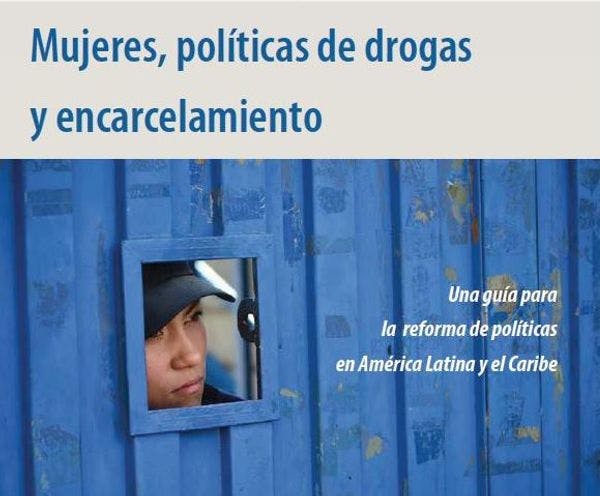How Latin America can fix its female incarceration epidemic
On February 2, 2016, a working group of human rights experts, legal specialists, and government officials from throughout Latin America published a policy roadmap for the region to reduce the unjust levels of women’s incarceration for drug offenses. Women, Drug Policy and Incarceration: A Guide for Policy Reform in Latin America and the Caribbean, released by the Washington Office on Latin America (WOLA), the International Drug Policy Consortium (IDPC), Dejusticia and the Inter-American Commission of Women of the Organization of American States (OAS), calls for a wide array of reforms to address the human cost of current drug policies in the Americas. Opening the event at the OAS to launch the policy guide, OAS Secretary General Luis Almagro, emphasized that the injustices caused by the excessive use of incarceration present a grave problem for the Americas and that the guide is a necessary tool to promote policy change.
The use of prison as a response to drugs has had a disproportionate negative impact on women. In Argentina, Brazil, and Costa Rica, more than 60 percent of the female prison population is incarcerated for drug-related offenses. Many of them have low levels of education, live in poverty, and are the primary caregivers of dependent persons—children, young people, the elderly, and the disabled.
Even though they bear the brunt of punitive policies, these women rarely pose a threat to society. Most are arrested for low-level yet high-risk tasks (small-scale drug distribution or transporting drugs); they become involved to overcome poverty, or at times due to coercion by a partner or relative. Their incarceration contributes little if anything to dismantling illegal drug markets or improving public security. To the contrary, prison tends to worsen the situation, further limiting their chances of finding decent and legal employment when released from prison, thus perpetuating a vicious cycle of poverty, involvement in drug markets, and incarceration.
The incarceration of women—caregivers in particular—can have devastating consequences for their families and communities. In the absence of strong social protection networks, their dependents are exposed to situations of abandonment and marginality. Indeed, the women’s incarceration may, paradoxically, increase the likelihood of persons in their care consuming drugs or becoming involved in illegal trafficking networks. This, in turn, increases the demand on governments to provide social services, an area that is often neglected.
The harmful effects of women’s incarceration are seen particularly clearly in the Buen Pastor Prison in Bogota, Colombia. In conjunction with the guide, two photo essays were released that tell the stories of Johana and Ángela, two Colombian women incarcerated on drug charges. They explain how poverty and a need to support their young children drove them to engage in the drug trade and the devastating consequences for their children.
It is time to acknowledge that current drug policies have resulted in the excessive criminalization and incarceration of women. These policies must be reviewed in order to reduce the female prison population. Drug policies should be developed based on the fundamental legal principle that incarceration should only be used as a last resort. Fundamental drug law reforms are needed throughout the region, so that low-level offenses committed by women or men can be addressed by alternatives to incarceration and by ensuring that the penalties are proportional to the offenses committed.
In addition, special attention should be given to the gender perspective in developing, implementing, and evaluating legislative and drug policy reforms. Criminal justice systems should be capable of taking attenuating circumstances into account, for example in the case of women who have dependents in their care, or pregnant women. In no case should women accused or convicted of non-violent drug crimes go to jail; instead alternatives to incarceration should be implemented. Indeed, alternatives to incarceration are less costly and less harmful responses, and more effective for addressing drug-related offenses.
The guide for policymakersoffers a road map of policy reforms based on a human rights and public health framework and from a gender perspective. It includes a set of guiding principles relevant for countries across the region and offers an array of concrete public policy recommendations covering seven specific categories: more inclusive drug policies; drug policy reforms; alternatives to incarceration; cultivation and drug processing; social inclusion programs; women who are pregnant or have dependents; and data collection and analysis. The guide is a tool for those interested in developing and implementing more humane and effective drug policies.
Please note that the guide is presently available in Spanish and will be available shorltly in English and in Portuguese here.
Keep up-to-date with drug policy developments by subscribing to the IDPC Monthly Alert.
Topics
Regions
Related Profiles
- Washington Office on Latin America (WOLA)
- International Drug Policy Consortium (IDPC)
